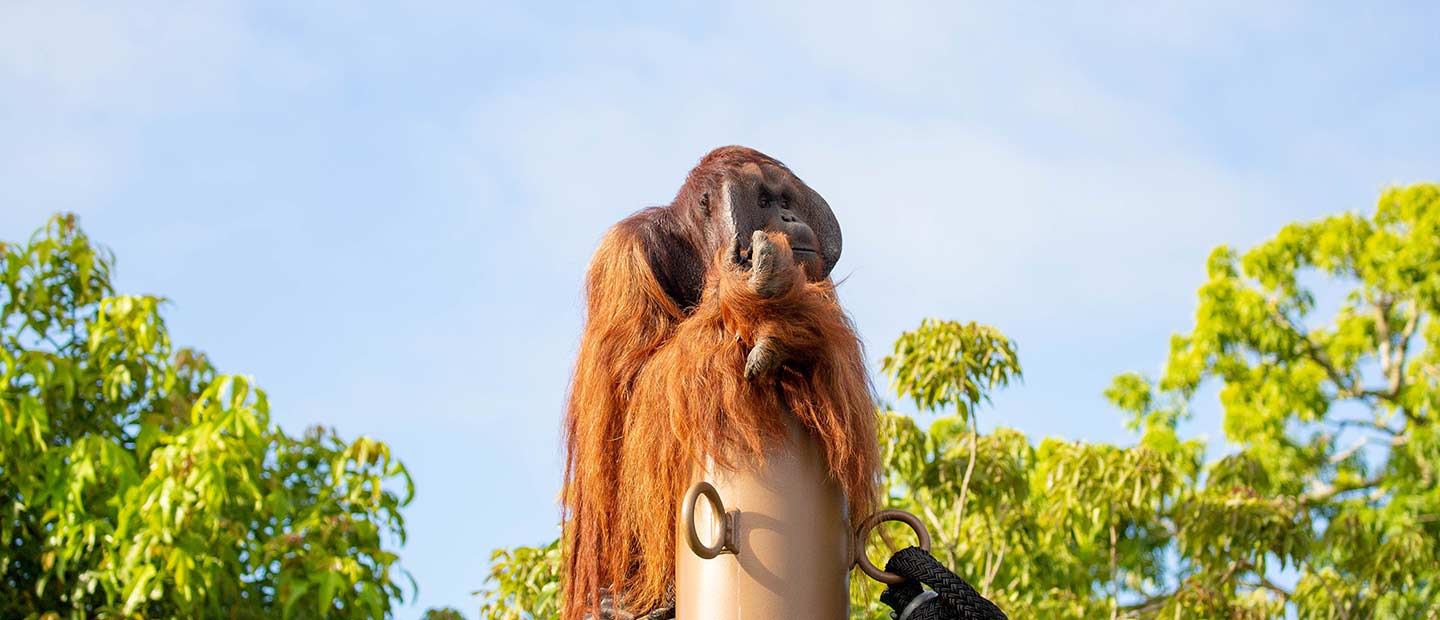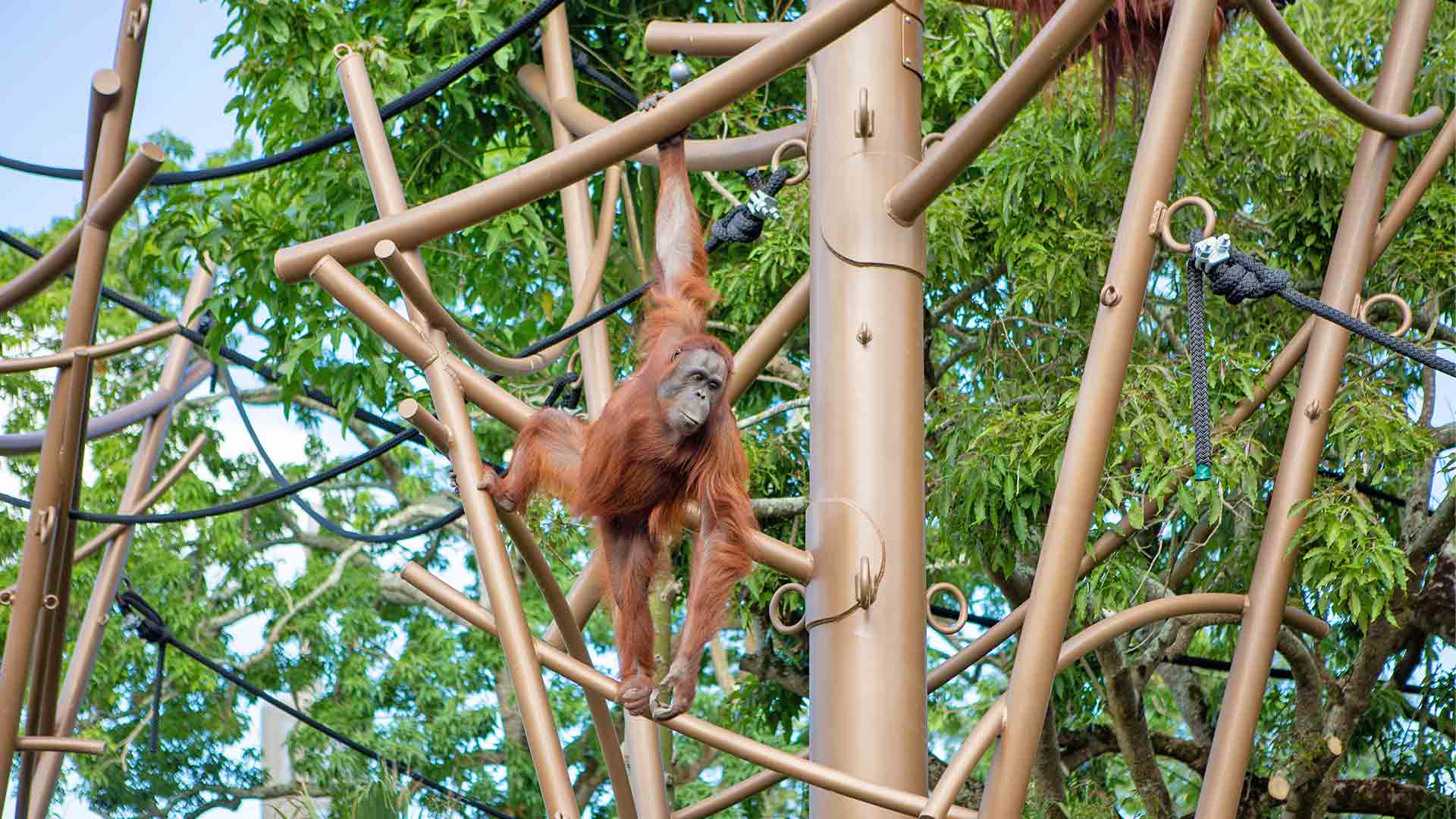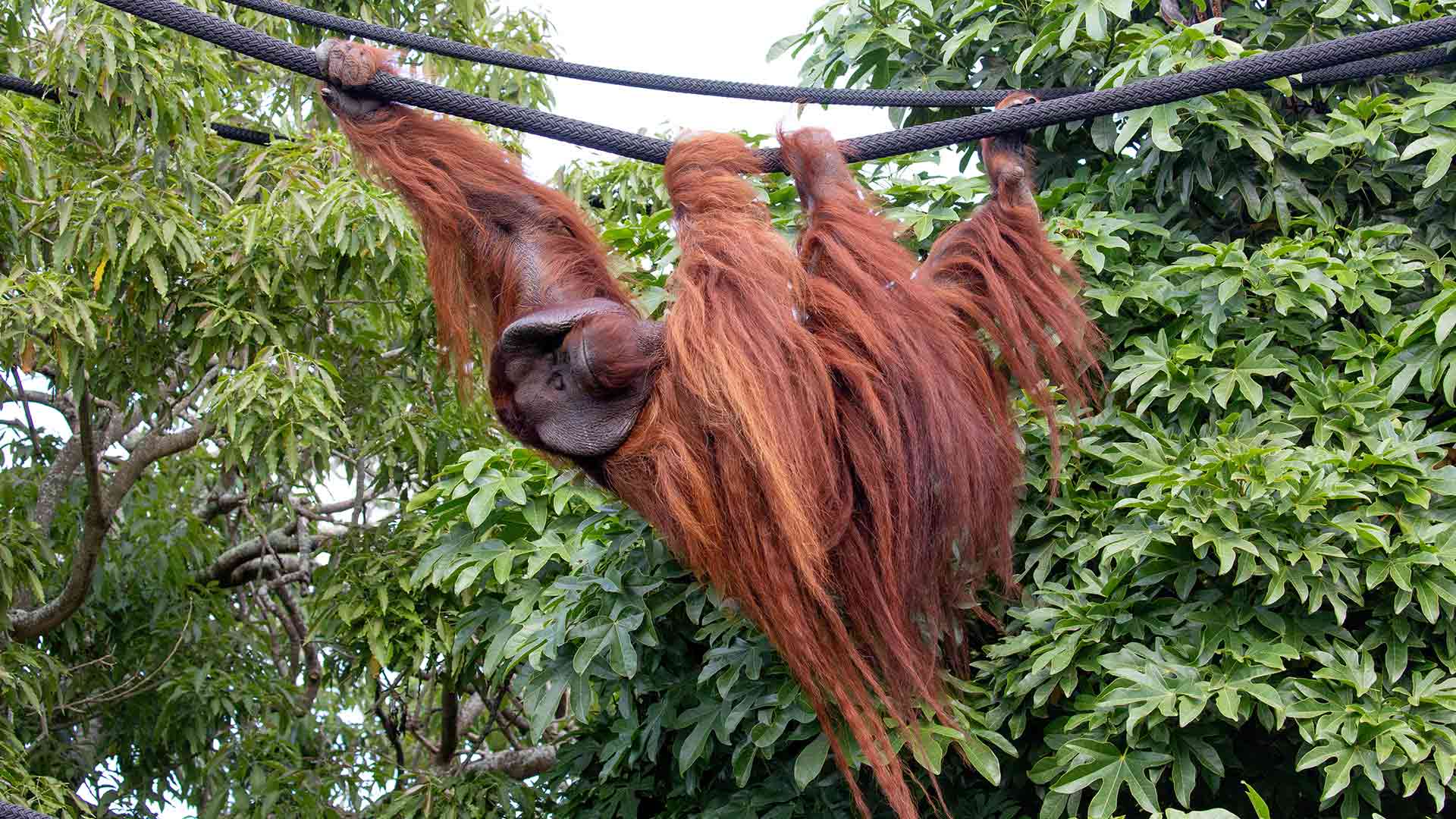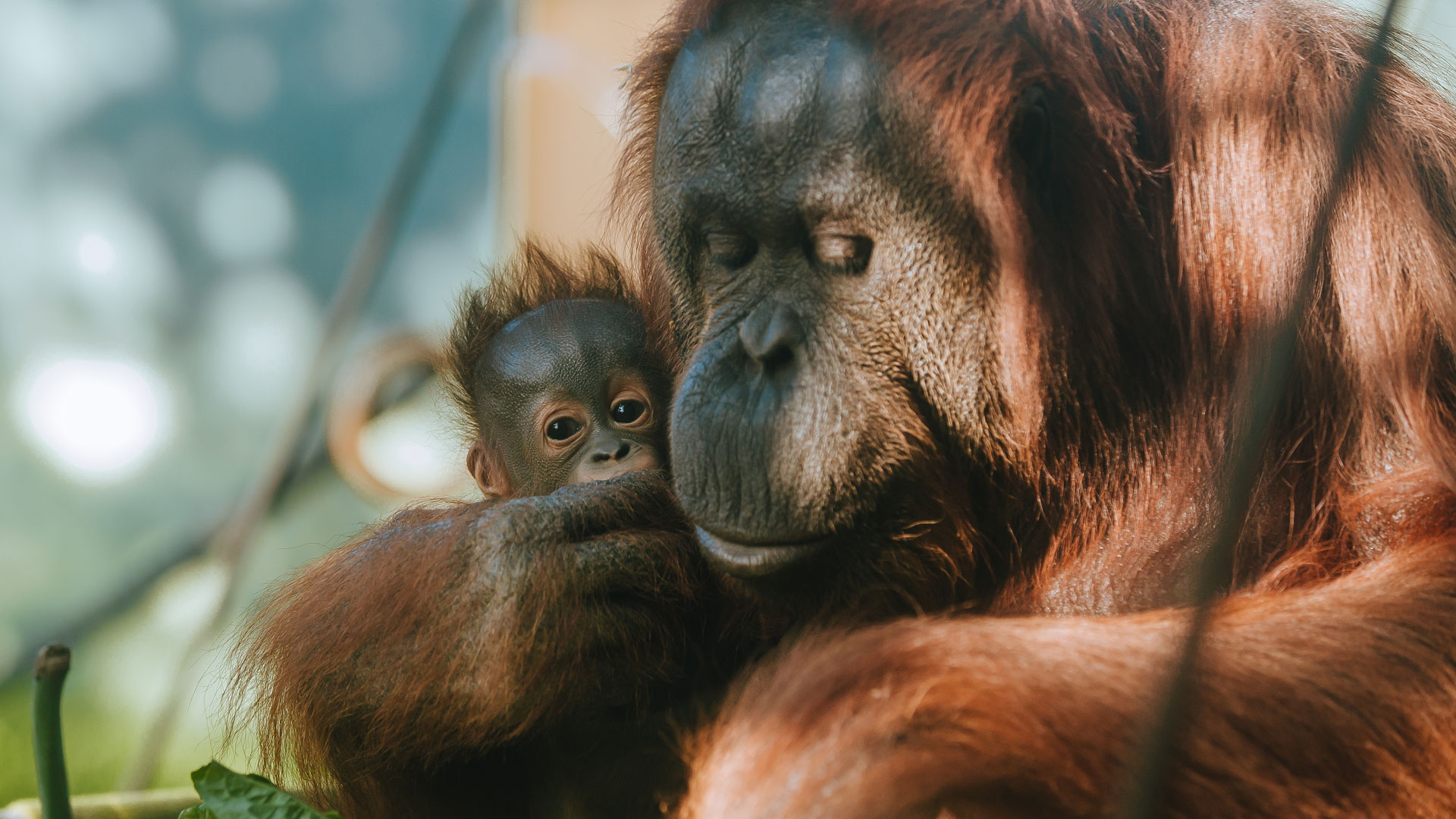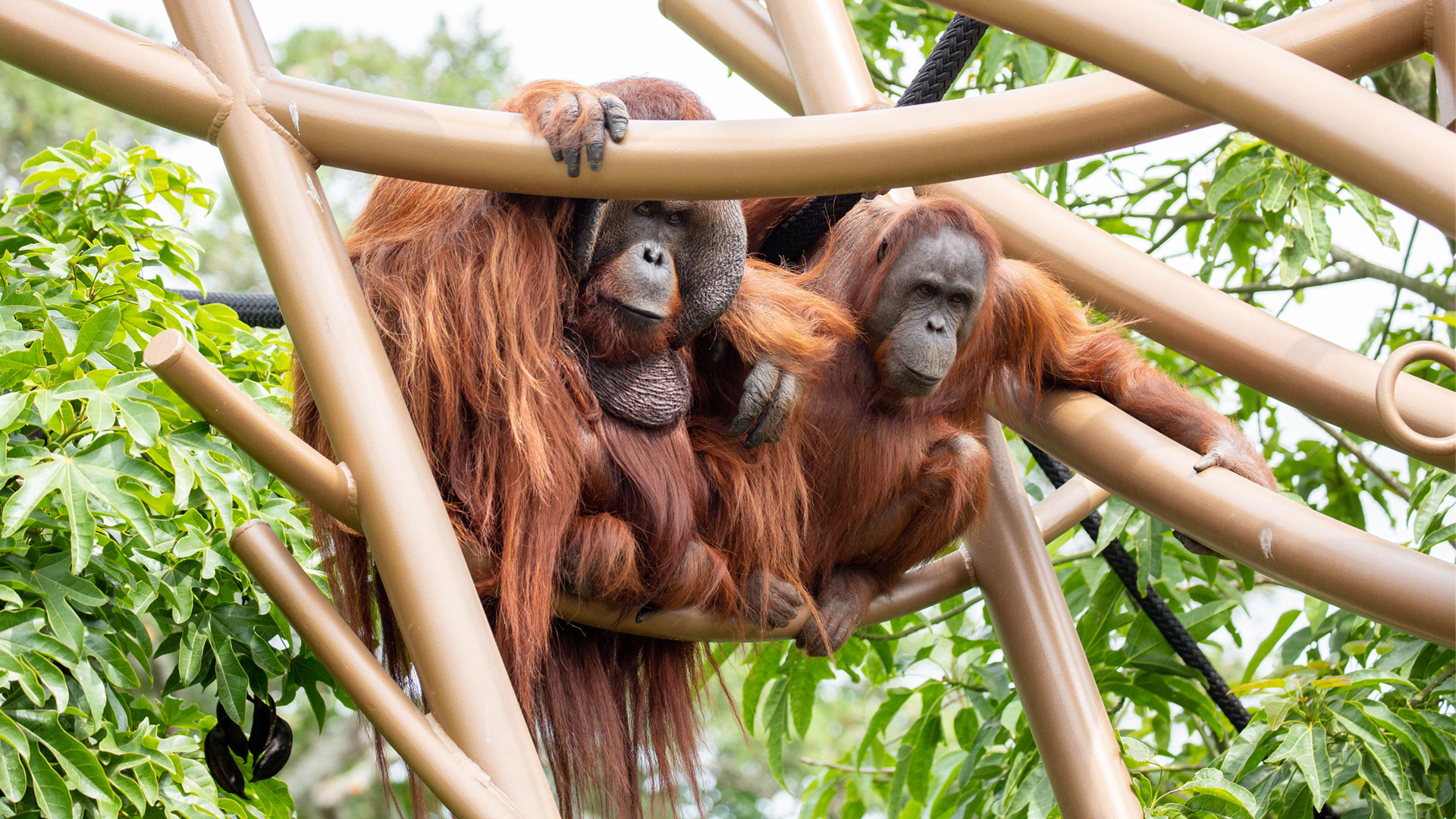How we're helping
We've been working with the Sumatran Orangutan Conservation Programme since 2002, to rehabilitate and reintroduce orangutans back into the Sumatran rainforest. We provide training, support, new facilities, food for orangutans and vet supplies. By supporting Auckland Zoo, you’re helping us create a world where orangutans and their rainforest habitat in Sumatra are secure and thriving.
We’ve worked with the Sumatran Ranger Project since 2016. Our partnership supports a team of rangers who work with local forest edge communities of the Leuser Ecosystem to provide long term protection to the species that live there.
Why are we doing it?
Burning rainforests for palm oil plantations and illegal logging operations in Borneo and Sumatra remains the biggest threat to orangutans.
The Leuser Ecosystem is one of the world's richest, yet least known and threatened forest ecosystems. As well as being home to orangutan, the Leuser Ecosystem is the last place on earth where Sumatran orangutans, rhinoceros, elephants and tigers still co-exist and is the last stronghold for all these critically endangered species.
Every month rangers patrol the buffer zone of the Leuser Ecosystem on foot through at least five forest edge communities, buffer zone forest and land; deactivating and removing snares, providing community outreach and education, conducting aerial surveys with drones, responding to and helping mitigate human-wildlife conflict, reporting illegal activity and collecting wildlife and human-wildlife conflict data. The team have removed over 500 snares to date, and are the only team patrolling the Leuser Ecosystem buffer zone in North Sumatra.


